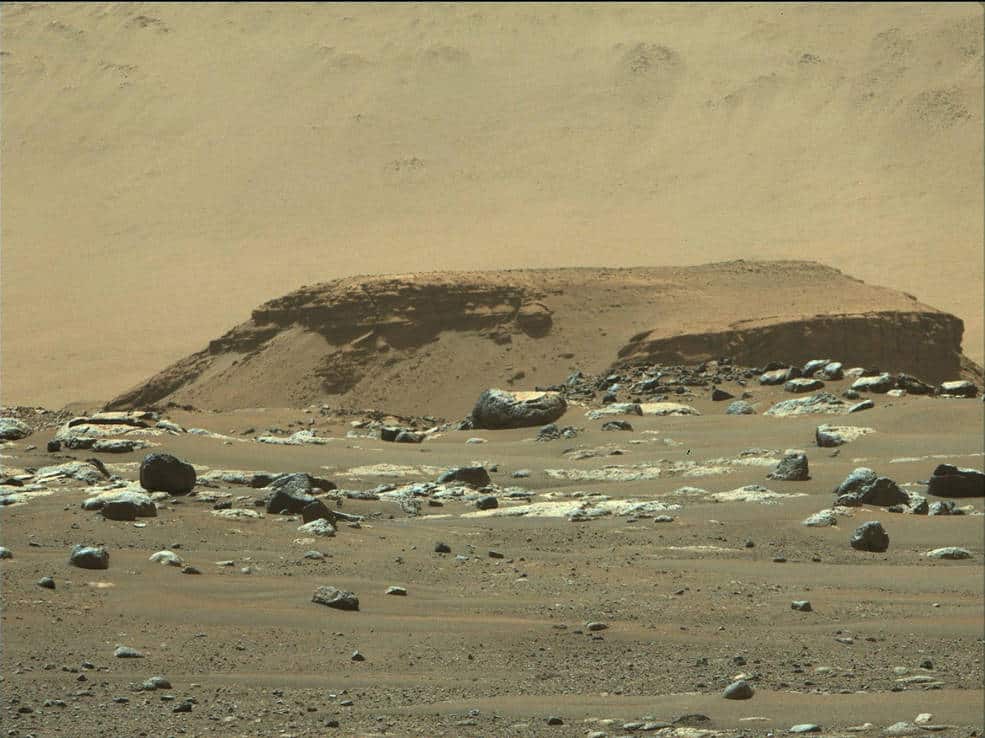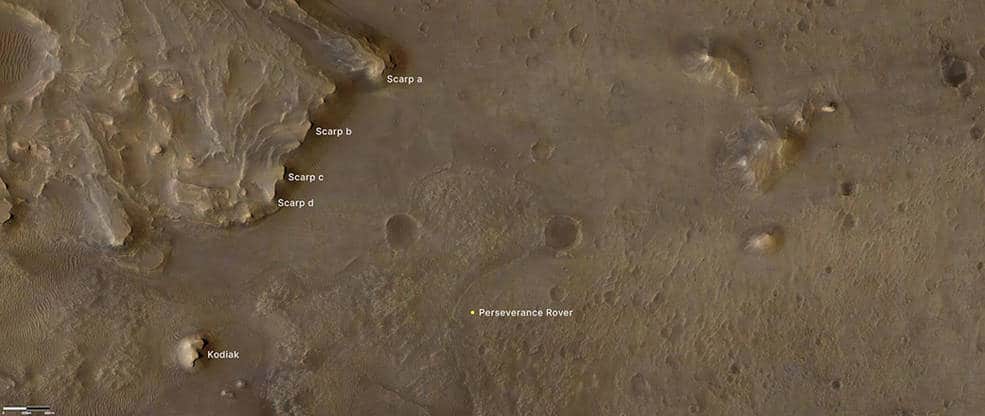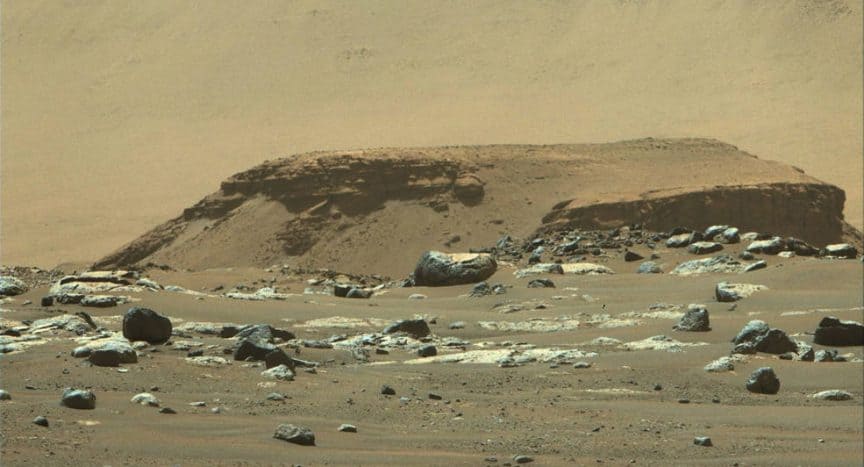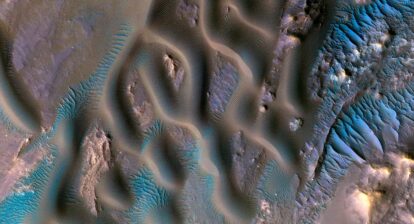On July 30, 2020 NASA launched Perseverance – part of its Mars Exploration Programme, a long-term effort of robotic exploration of the Red Planet – from Cape Canaveral Air Force Station, Florida. After traveling nearly six-and-a-half months and 300 million miles (482.8 million km), and following nail-biting seven minutes of entry, descent, and landing (EDL) known as “seven minutes of terror”, Perseverance landed at Jezero Crater on February 18, 2021. The landing site is an ancient 820-foot-deep (250 m) lake bed known as Jezero Crater, which researchers thought was probably filled with water about 3.9 billion to 3.5 billion years ago. This also has an ancient river delta, where water probably once flowed, so there is potential for a lot of sediment. Mission scientists chose Jezero Crater as the most promising places to look for evidence of ancient microbial life, and to collect samples for future return to Earth.
Now after spending almost a year and a half roaming around Jezero Crater and taking photographs, Perseverance has helped to further understand the hydrological cycle of the now dry lake bed. In a new study scientists analyzed the detailed imaging the rover provided of “long, steep slopes called escarpments, or scarps in the delta, which formed from sediment accumulating at the mouth of an ancient river that long ago fed the crater’s lake“. These images revealed that billions of years ago (approximately 3.7 billion years ago), Mars’ atmosphere was thick, warm and humid enough to support flowing water on its surface. The fan-shaped river delta experienced flooding events that carried rocks and debris from the highlands outside the crater into the delta.

This image of an escarpment, or scarp – a long, steep slope – along the delta of Mars’ Jezero Crater was generated using data from the Perseverance rover’s Mastcam-Z instrument. The inset image at top is a close-up provided by the Remote Microscopic Imager, which is part of the SuperCam instrument. Credits: NASA/JPL-Caltech/LANL/CNES/CNRS/ASU/MSSS

The fan-shaped Jezero Crater on Mars. Image: NASA/JPL-Caltech
The images were taken from about 1.2 mi (2.2km) away from the scarps, which were toward the northwest of the rover. Towards its southwest there is another rock called “Kodiak” that had only been imaged from orbit before the arrival of Perseverance. Kodiak has now been revealed for the first time, including the order and position of its rock layers (stratigraphy). These provide information of the relative timing of the geological deposits along its eastern surface. And the layering is exactly what we would expect to see in Earth’s river deltas.

This image of “Kodiak” – one remnant of the fan-shaped deposit of sediments inside Mars’ Jezero Crater known as the delta – was taken by Perseverance’s Mastcam-Z instrument on Feb. 22, 2021. Credits: NASA/JPL-Caltech/ASU/MSSS
“Never before has such well-preserved stratigraphy been visible on Mars,” said Nicolas Mangold, a Perseverance scientist from the Laboratoire de Planétologie et Géodynamique in Nantes, France, and lead author of the paper. “This is the key observation that enables us to once and for all confirm the presence of a lake and river delta at Jezero. Getting a better understanding of the hydrology months in advance of our arrival at the delta is going to pay big dividends down the road.”
Surprisingly, while the scarps towards the northeast showed layers similar to Kodiak’s on their lower halves, farther up on their steep walls there were stones and boulders (some measuring more than a metre in diameter). This means that the waterway that fed the delta was impacted by fast-moving flash floods that came later. According to the science team’s estimate, a torrent of water needed to transport the boulders – some of them for tens of miles – would have to travel at speeds ranging from 4 to 20mph (6 to 30kph).

This annotated image indicates the locations of NASA’s Perseverance rover (lower right), as well as the “Kodiak” butte (lower left) and several prominent steep banks known as escarpments, or scarps, along the delta of Jezero Crater.
Credits: NASA/JPL-Caltech/University of Arizona/USGS
According to NASA astrobiologist Amy Williams, “From orbital images, we knew it had to be water that formed the delta, but having these images is like reading a book instead of just looking at the cover.”
One of Perseverance’s objectives is to collect and cache Martian rock and regolith for a future mission to collect them and bring them back to Earth. Over the next few years it will collect about 30 samples, which will be analyzed for signs of ancient microbial life on the planet. It collected two rock samples in September that showed that they had been in contact with water for long periods. The findings revealed in the latest study will help pinpoint where to send the rover to collect samples thay may have biosignatures for ancient life.
“These results also have an impact on the strategy for the selection of rocks for sampling,” said Sanjeev Gupta, a Perseverance scientist from Imperial College, London, and a co-author of the paper. “The finest-grained material at the bottom of the delta probably contains our best bet for finding evidence of organics and biosignatures. And the boulders at the top will enable us to sample old pieces of crustal rocks. Both are main objectives for sampling and caching rocks before Mars Sample Return.”







